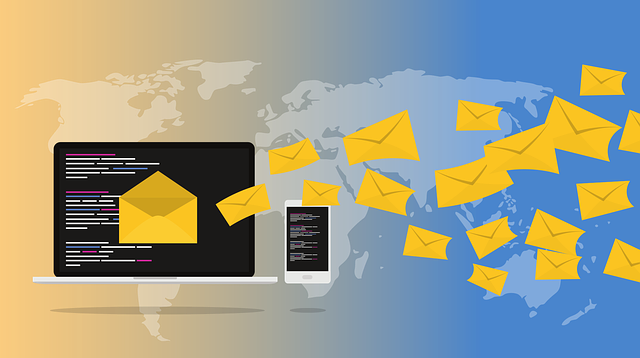Email marketing for engagement uses A/B testing to optimize key metrics like open rates, CTRs, and conversions through data-driven adjustments to subject lines, CTAs, offers, and storytelling. Integrating AI, CRM, and WhatsApp enhances personalization across multi-channel strategies. Design tests targeting specific metrics, personalize content based on user behavior or demographics, and utilize marketing analytics tools for data-driven campaign decisions.
Email marketing is a powerful tool, but enhancing its effectiveness requires strategic optimization. A/B testing emerges as a game-changer in this realm. By comparing two versions of an email campaign—a process known as A/B testing—marketers can uncover insights driving higher engagement. This article delves into the intricacies of A/B testing for email campaigns, guiding you through defining key metrics to optimize and crafting effective test variations to boost open rates, click-throughs, and conversions, thereby revolutionizing your email marketing strategy.
- Understanding A/B Testing for Email Campaigns
- Defining Key Engagement Metrics to Optimize
- Strategies for Crafting Effective Test Variations
Understanding A/B Testing for Email Campaigns

A/B testing is a powerful tool for email marketing professionals looking to enhance engagement metrics. This method involves creating two or more variations of an email campaign and randomly sending them to different segments of your subscriber base, allowing for direct comparison of their performance. By segmenting your audience based on demographics, previous interactions, or any other relevant factor, you can tailor content that resonates best with each group.
This strategy is particularly beneficial for ecommerce solutions, as it enables marketers to optimize subject lines, body copy, call-to-actions (CTAs), and even send times to drive higher open rates, click-throughs, and conversions. Marketing analytics play a crucial role in interpreting the results of A/B tests, providing insights into which variations perform best and identifying trends that can guide future email marketing strategies. Moreover, this data can be used to optimize not just email campaigns but also landing pages, enhancing the overall customer experience and boosting sales.
Defining Key Engagement Metrics to Optimize

In the realm of email marketing for engagement, understanding what metrics to optimize is crucial. Key Engagement Metrics (KEMs) are quantifiable indicators that reflect how well your emails resonate with recipients. These could include open rates, click-through rates (CTR), time spent on the email, and conversion rates. By defining these KEMs, marketers can set clear objectives and identify areas for improvement. For instance, a low CTR might indicate a subject line that needs refining or content that isn’t capturing attention.
Email marketing strategies benefit from A/B testing to continually optimize these KEMs. Testing different versions of an email—from subject lines to call-to-actions (CTAs)—allows for data-driven decisions. Additionally, integrating tools like AI chatbots and CRMs can enhance email campaigns by personalizing content based on user behavior. Even Whatsapp marketing, as a direct messaging platform, can be integrated with email strategies to create multi-channel experiences, thereby boosting overall engagement.
Strategies for Crafting Effective Test Variations

When designing A/B test variations for email marketing engagement, it’s crucial to approach each test with a strategic mindset. Start by identifying the specific metric you want to optimize—be it open rates, click-throughs, or conversions—and craft variations that directly target those goals. For instance, if your focus is on increasing clicks, create subject lines and call-to-action (CTAs) that are intriguing and compelling. A/B test different versions of CTAs, such as “Shop Now” versus “Discover More,” to see which encourages more users to take the desired action.
Additionally, leverage the power of personalization. Segment your email list based on user behavior or demographics and create tailored content for each segment. Personalized emails have been shown to enhance engagement significantly. Test different variations of email content, including offers, product recommendations, or storytelling elements, to determine what resonates best with your audience. Incorporate compelling visuals, clear benefits, and a sense of urgency to create engaging landing pages that complement the email, as users are often directed there via clicks. Utilize marketing analytics tools to track and measure the performance of each variation, enabling data-driven decisions for future campaigns.
A/B testing is a powerful tool in email marketing for engagement, allowing marketers to refine their campaigns and deliver tailored content that resonates with subscribers. By understanding the key engagement metrics, defining target audiences, and crafting compelling test variations, businesses can optimize their email strategies and boost interaction rates significantly. This data-driven approach ensures that each email sent is an opportunity to build stronger connections with customers, ultimately driving better results in email marketing campaigns.
